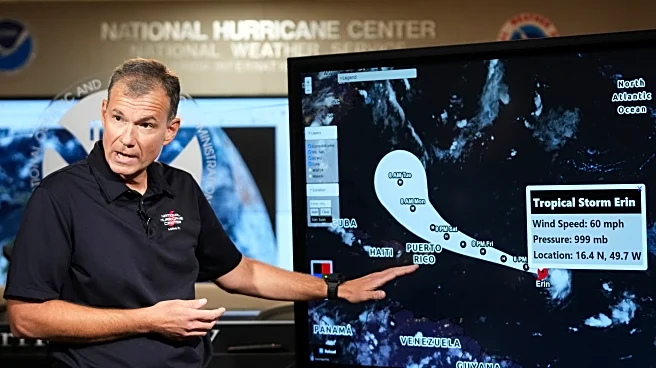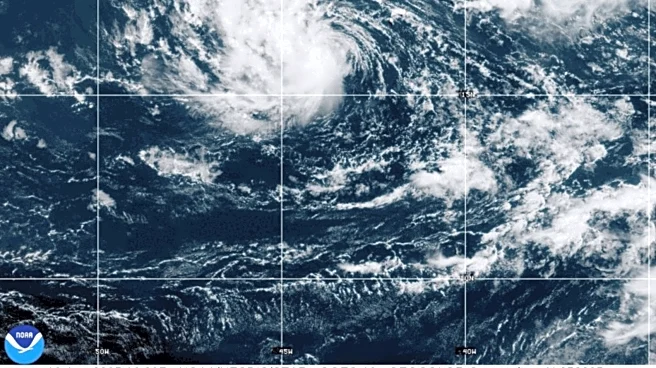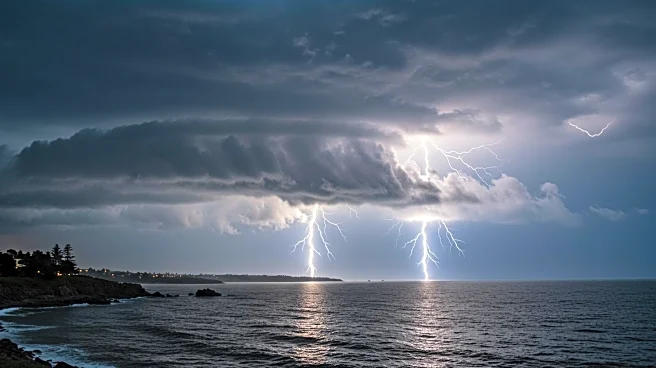What's Happening?
Tropical Storm Erin has strengthened into the first Atlantic hurricane of the year, with winds reaching 75 mph as of Friday morning, according to the National Hurricane Center. The storm is currently positioned about 460 miles east of the Leeward Islands and is expected to intensify into a Category 4 hurricane by Monday. Erin is forecasted to pass north of the Caribbean Islands, potentially bringing heavy rain, strong winds, and hazardous sea conditions to regions such as Puerto Rico, the Virgin Islands, and the northern Leeward Islands. A tropical storm watch is in effect for several islands, including Anguilla, Barbuda, and St. Martin, with weather conditions expected to deteriorate starting Friday night.
Why It's Important?
The intensification of Erin into a Category 4 hurricane poses significant risks to the Caribbean region, including potential flash floods, landslides, and dangerous sea conditions. The storm's trajectory suggests it will remain offshore, avoiding direct landfall, but its outer bands could still impact coastal areas with heavy rainfall and strong winds. The East Coast of the United States may experience dangerous rip currents and rough seas, affecting beachgoers and maritime activities. The situation requires close monitoring as the storm's path could change, potentially bringing it closer to populated areas.
What's Next?
Erin is expected to continue its path northward, potentially passing offshore of the Turks and Caicos and the Bahamas early next week. The National Hurricane Center is also monitoring another disturbance moving toward South Texas, which could bring scattered downpours and a risk of flash flooding. Residents in affected areas are advised to stay informed about weather updates and prepare for possible impacts. The hurricane's progression will be closely watched, especially as it approaches Bermuda, where it could bring heavy rain and strong winds.
Beyond the Headlines
The development of Erin highlights the ongoing challenges posed by extreme weather events in the Atlantic hurricane season. The potential for rapid intensification underscores the importance of preparedness and resilience in vulnerable regions. The storm's impact on tourism, local economies, and infrastructure in the Caribbean and along the U.S. East Coast could be significant, necessitating coordinated response efforts from governments and communities.












